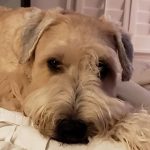Telehealth - how it works
A telehealth appointment can be requested here
There are several procedures
We will contact you at the agreed appointment time. Contact can be by regular phone or video call using Privacy protected Doxy.me.
- BEST: before the appointment, you upload your blood sugars from your meter to Tidepool, or Freestyle Libre to LibreView, or Medtronic pump to CareLink or Omnipod to Tidepool. How? Click Here
- NEXT BEST: You take a picture of your log or sugar “averages” screen and text to DCC. How? Click Here.
- THIRD BEST: at the call you answer questions of Dr. Raine.
Diabetes Patients:
We rely heavily on data derived from your labs and devices (e.g. glucose meter, sensor or insulin pump). We need this information to make the best decisions in management of diabetes. Now there are several platforms allowing the patient to share data as a part of the telemedicine appointment. See below. We also need your lab information. If performed at LabCorp, we will generally have access to the results. If performed at your primary physician’s office, we will frequently NOT have the results. In that case, we request that you obtain a copy for yourself, take a photo of each page of the lab results and sent to us, How? Click here.
Thyroid patients:
We will need your lab information. If performed at LabCorp or Quest, we will generally have access to the results. If performed at your primary physician’s office, we will frequently NOT have the results. In that case, we request that you obtain a copy for yourself, take a photo of each page of the lab results and send. How? Click Here
Newer lancet devices with smaller lancets cause less pain.
The point is some of the gadgets used to extract blood for testing cause more pain than others. Go figure, the more costly ones likely  cause less pain. Since your insurance company isn’t feeling your pain, these are least likely to be covered. After paying for insulin and/or pills, now I gotta pay more for testing 🙁
cause less pain. Since your insurance company isn’t feeling your pain, these are least likely to be covered. After paying for insulin and/or pills, now I gotta pay more for testing 🙁
The Lancet device.
Most devices ship with an adjustable depth gauge with numbers from 1 to 10. The higher the number the deeper the poke. Many devices come out of the box with a high depth number (5 – 10).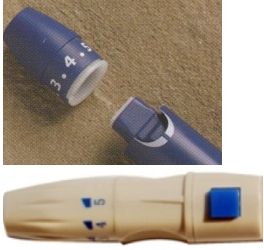
The lancets
Most lancets come in 2 needle sizes, 30 and 33 gauge. The higher the gauge, the thinner the needle.
How to reduce the pain and discomfort of fingerstick testing.
- Choose a lancet device with variable depth setting.
- Set depth a low number (1 or 2), check if it works. If not, Increase the depth 1 step at a time you get a satisfactory sample.
- Choose a high gauge lancet. Thirty- and 33-gauge lancets are commonly available, the highest gauge I’ve seen is 36, by TiniBoy® advertised online for about $8 for a box of 100 (available on Amazon).
- Test on the side of the finger, NOT the center where most sensitive nerves are.
Best practice finger stick testing
Ideally wash hands (rinse and dry toughly) before testing. If hands are not dried thoroughly, the blood sample will be diluted. If recently handling something containing carbohydrates such as fruit, your result could be inaccurate because now you are measuring the carbohydrate residue on your finger plus blood. A thorough washing removes this residue better than alcohol. If unable to wash hands, use alcohol, cleanse thoroughly and allow to dry. Alcohol dries skin making it less pliable therefore increased pain.
Alternate site testing.
Pros:
- Cause less pain
- Compares favorably with finger stick if blood sugar not changing.
Cons:
- Sometimes difficult to extract blood.
- Readings may lag behind fingerstick as much as 20 minutes if blood sugar changing e.g. after medication, after meals, impending low sugar.
Some lancet devices likely to cause less fingerstick pain.
There are many very smart people with type 1 diabetes e.g. Justice of the Supreme Court Sonia Maria Sotomayor. Are people with type 1 smarter than the general population? I think not. I do believe type 1s learn early to concentrate on diabetes specifics. The brain, like any other organ works better if exercised early in life. Those unwilling or unable to focus on those diabetes specific issues rapidly drop out of the gene pool.
Are people with type 1 smarter than the general population? I think not. I do believe type 1s learn early to concentrate on diabetes specifics. The brain, like any other organ works better if exercised early in life. Those unwilling or unable to focus on those diabetes specific issues rapidly drop out of the gene pool.
The main diabetes specific issue in type 1 is insulin or more specifically how to deliver it.
Choices:
- Multiple injections.
- Basal plus inhaled insulin
- Standard insulin pump (with or without tubes)*
- Insulin pump with CGM.
- Closed loop “artificial pancreas “
What is a closed loop system and is it for you?
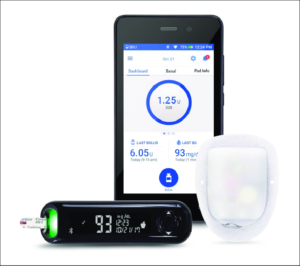
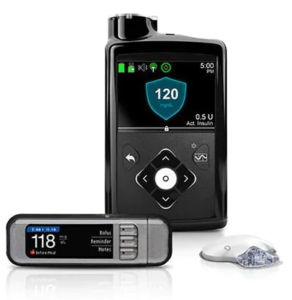
A closed loop insulin delivery system, sometimes referred to as an “artificial pancreas”, combines an insulin pump with a glucose sensor to provide insulin based on real time glucose.
According to Aaron Kowalski, PhD CEO JDRF, at the current state of closed loop technology:
What you get
- More time in range
- Fewer highs
- Fewer lows
- Better sleep
- Less variability
What you don’t get
- A Cure
- Zero work
- Auto pilot
What’s out there as of October 2019?
Medtronic 670G with Medtronic Guardian CGM
Pros | Cons |
Automatic pump shut off when low glucose is detected | Complex. Requires frequent fiddling with. |
Basal rate adjustment up or down based on predicted high or low glucose | Automode requires fingersticks for calibration |
Tandem t:/slimX2 with Dexcom CGM
Pros | Cons |
Can be charged, no batteries | Must be charged 1-2 times weekly |
Predicts low glucose and suspends pump (with Basal IQ feature) | Reservoir fill process has been called “clunky” |
Several systems are up for approval and may be available later this year or in 2020. Click here if you are interested in the current state of closed loop development.
*Popular pumps in the US
- Medtronic 630g, 670G
- Omnipod (tubeless)
- Tandem t:slim X2, t:flex
How to live with diabetes and avoid ulcer/amputation
First: Control risk factors (blood sugar, blood pressure, cholesterol).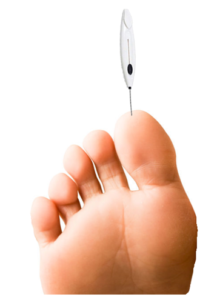
Foot evaluation and recommendations based on the condition of your feet.
Situation A
You have:
- No loss of ankle/foot protective sensation*.
- No circulation problems (PAD*).
Assessment: very low risk (ADA ulcer/amputation risk category 0).
Action: annual foot examination.
Situation B
You have: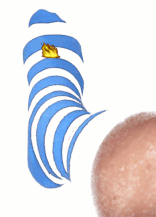
- Loss of foot/toe protective sensation*, and
- Stable foot deformity, and
- Requiring special shoes.
Assessment: low risk (ADA ulcer/amputation risk category 1).
Action: foot examination every 4 to 6 months
Situation C
You have:
- Circulation problems (PAD*), and
- Reduced foot/ankle pulses. and
- Swelling of the legs and feet.
Assessment: modest risk (ADA ulcer/amputation risk 2)
Action: foot examination every 2 to 3 months.
Situation D
You have:
- Diabetes, and
- History of previous ulcer or amputation of the lower extremity, and
- Chronic vein insufficiency (skin color change or temperature difference between the feet).
Assessment: high risk (ADA ulcer/amputation risk category 3).
Action: foot examination every 1 – 2 months.
Situation E
You have:
- An open or ulcer with or without infection
 and /or
and /or - Nerve pain or pain at rest, and/or
- Signs of active ankle collapse (Charcot deformity), and/or.
- Red, hot, swollen, mid-foot or ankle, and/or
- Gangrene, reduced circulation
Assessment: Urgent foot/ankle disease (ADA ulcer/amputation risk URGENT)
Action: Evaluation by specialist. Follow up as determined by specialist.
Based on “Diagnosis and management of diabetic foot complications” American Diabetes Association
*Protective sensation: a level of feeling loss, where a patient can have a foot injury without feeling it. Generally caused by peripheral neuropathy.
*PAD: peripheral artery disease.
Key point. HOW MUCH you eat is more important than WHAT you eat. Nothing is forbidden! Well not quite, nothing is always, and nothing is never. The worst foods for your blood sugar are those that combine carbs and FAT (e.g., pizza, mac and cheese). Just limit the amount and how often. Check sugar a couple of hours after a favorite food, see what it does. Example, I love chicken pot pies. Eating the whole thing (including that great gooey bottom), chases blood sugar to the 250 range despite insulin before. If I eat only the top crust and the contents but not the bottom and side crusts, the same amount of insulin keeps me in the 140 range.
Are you ready to lose some weight and get your sugar down? If you are type 2, overweight and serious about weight loss and reducing sugar. Download our FREE Crazy Diet. Don’t try this unless you get permission of your medical team. It is not to replace instructions from medical professionals. P.S. It’s called the crazy diet because a patient looked at it and exclaimed, “are you crazy?” Click “Crazy Diet” below to download.
Exercise
Increase exercise as much as is healthy for YOU. Thirty minutes a day is excellent, but 10 min is VERY useful.
If you can’t run, walk. If you can’t walk, do chair exercises.
Control your blood sugar
Control of diabetes means reaching a customized target for average blood sugar (glucose), commonly denoted by A1c. The American Diabetes Association suggests an A1C of 7% for non pregnant adults, which equals an eAG (estimated Average Glucose) of 154 mg/dl. Higher or lower goals may be suitable for some people.
You need your personalized goal, an A1c target for a 45-year-old otherwise healthy person with type 2 diabetes may not be appropriate for a 72-year-old with a history of heart disease and/or chronic kidney disease.
We believe everybody needing medicine for diabetes should monitor blood glucose. A blood glucose test gives a snapshot of the immediate situation but does not represent the average. Average glucose (A1c) is a better predictor of complications.
Recommendations for meter measured blood glucose (sugar) are:
FASTING = 80 – 130 mg/dl.
POST MEAL = < 180 mg/dl
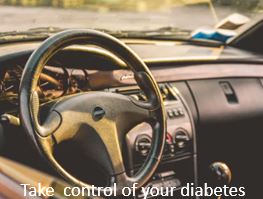
How can I control my diabetes?
- Claim it. It’s yours, it’s not going away. Diabetes is into everything. It is affected by eating, sleeping, exercise, stress, love, hate, you name it!
- Increase exercise as much as is healthy for YOU. Thirty minutes a day is excellent but 10 min is VERY useful.
- If you can’t run, walk. If you can’t walk, do chair exercises.
- Follow your diet plan.
Dario Glucose Monitoring system
We request that our diabetic patients bring their glucose meter for computer upload at each visit. With this data we can evaluate the ups and downs of blood sugar. Frequently our patients forget to bring the meter or intentionally leave it to avoid exposing the results of dietary fun 😊. No one forgets the phone!!
The Dario system has features to help us support patients in diabetic management.
The Dario blood sugar meter attaches to the phone. One does not have to carry a bulky container with the meter, strips, lancets device and extra lancets, it’s all in one package.
Information about the blood sugars is on the dad gum phone. We can get at it. When one puts together blood sugars, food, medication, insulin and insulin timing, intelligent decisions can be made to improve blood sugar control and A1c.
The Dario device contains everything needed to check blood sugar frequently (see video).
The app (available for both IOS and android) contains a food barcode scanner for carbohydrate counting, weight logging and tracking, a graph of sugar excursions, medication–insulin information and others.
Most modern blood glucose meters contain Bluetooth capability. Whether the information is gotten directly from the meter, from the phone or a diabetes app, data becomes crucial in decision-making about diabetes.
Managing your diabetes
Traditionally, you go to your practitioner, have your records examined and a medical professional makes recommendations for changes and your diabetes treatment plan.
Your Diabetes Team cannot see you for another 3 months, it is difficult to act on results of the change. Three months later you repeat the cycle. Currently you can upload your information on several platforms such as LibreView and several software systems issued by meter, pump or glucose monitor manufacturers. In this scenario you are limited to the specific product covered. Examples are: Medtronic CareLink; Insulet by Glooko; Tandem T:Connect for T:slim pumps among others. There are several phone/tablet apps to upload information including Glooko, One Drop, MySugr and others. These programs allow a patient to examine personal glucose/insulin information, but they are problematic for your doctor or practitioner’s office because special software must be maintained for each platform.
Finally, a breakthrough. A nonprofit organization allows patients to upload diabetes information from (nearly ALL) meters, pumps, and continuous glucose monitors. It is free to patients and to practitioners. It is called TIDEPOOL. A patient can examine his or her own information and can share it with the professional’s office. A patient can choose to share non-identifiable data with researchers that can help solve this diabetes problem in the long run.
Tidepool – A nonprofit central repository of diabetes data for patients, medical professionals and researchers. Diabetes Control Center
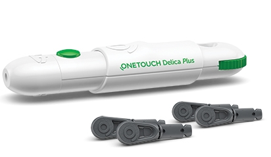
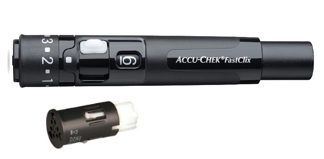

 Food
Food